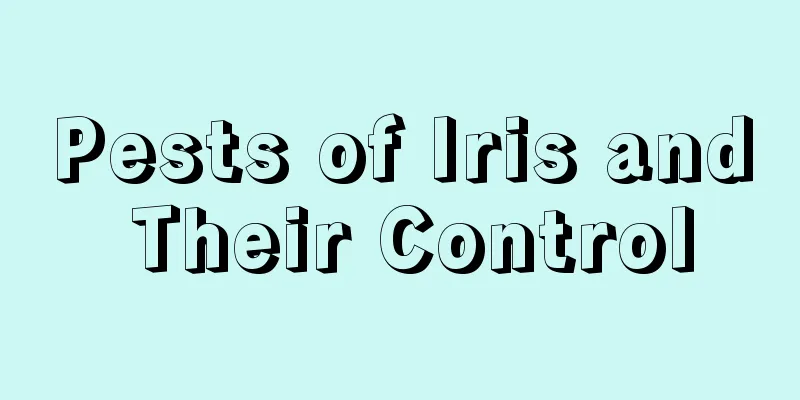Pests of Iris and Their Control

Pests of Iris and Their ControlIris is a plant that is extremely resistant to insect pests and generally does not suffer from insect pests. However, there is a kind of insect commonly known as the small cutworm that can harm Iris. Cutworm pestsThe pest of small cutworms is actually quite common in Hengshui area. Small cutworms can have three generations a year, so they can reproduce very quickly. The small larvae of cutworms will chew holes in the leaves of iris and cause them to become damaged, while the larger larvae will lurk in the soil at the roots during the day and chew and cut off the rhizomes above the ground after dusk, thus affecting the growth of iris and causing the leaves of the plant to dry out, turn yellow, or even fall off. Prevention and control of cutworm pestsThe pests caused by small cutworms cannot be underestimated, so how can we effectively prevent and control them? First, drug prevention Control is best if the larvae are started before they are 3 years old. You can use 5% chlorpyrifos granules, add fine soil, mix well, and then sprinkle it on the lawn; or spray 1000 times diluted 50% chlorpyrifos solution. This will kill the larvae directly and prevent them from reproducing and growing. Secondly, biological control Biological control can be achieved by using black light or sweet and vinegar solution to lure and kill mature insects. Setting up the black light and sweet and sour liquid should be done between early March and late May. First, place a large vat of water under the light, and then sprinkle engine oil on the water surface. Preparing the sweet and sour liquid. Preparation method of sweet and sour liquid: use 1 part of brown sugar, 3 parts of vinegar, 10 parts of water, then add a small amount of trichlorfon solution and stir evenly. When using it, choose a sunny evening and place the prepared liquid among the Iris seedlings. You can collect it after dawn, collect the killed insects, and then bury them or throw them into the trash can. |
<<: Common Pests of Purple-Leaf Plum and Their Control
Recommend
Is willow peach suitable for domestic cultivation?
1. Is it suitable for domestic breeding? The olea...
Flowers suitable for autumn
1. Hibiscus Hibiscus flowers have bright colors, ...
The meaning of lily
The fragrant lily is a type of lily and a perenni...
Pear tree growth environment conditions and characteristics
Pear tree growth environment conditions and requi...
How to gain weight with Maruyeji Qiuli
1. Water thoroughly when it is dry during the gro...
Cultivation methods and precautions of Mirabilis jalapa
Growth environment Growth habit Mirabilis jalapa ...
When is the best time to repot Begonia
Begonia repotting time Begonias grow in pots for ...
The difference between Yunnan Paris polyphylla and Chinese Paris polyphylla
1. Differences in the stems The stem of Yunnan Pa...
Alfalfa planting time and method
Alfalfa planting time Alfalfa has strong adaptabi...
Tomato pruning method
Tomatoes are planted over a large area, and pruni...
Can banana peels be used as fertilizer?
Making flower fertilizer from banana peel Althoug...
Chayote Growth Environment Conditions and Characteristics
Chayote Growth Environmental Conditions and Requi...
How to use Areca palm for flower arrangement and how to trim it
1. Flower arrangement pruning method 1. Method 1:...
Daphne cultivation methods and precautions
Daphne koreana is popular for its thick, shiny le...
How to breed new jade ornaments and what to pay attention to
The reproduction method of the new jade ornament ...









